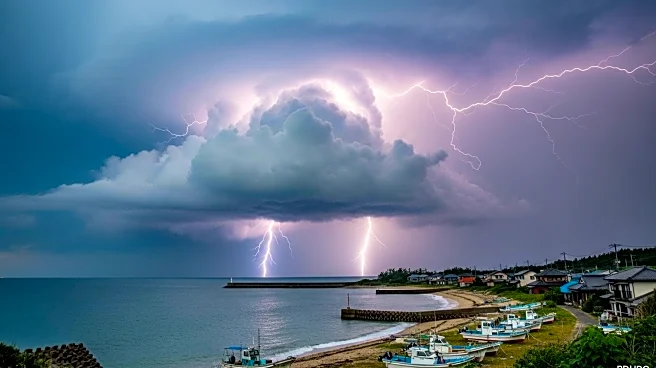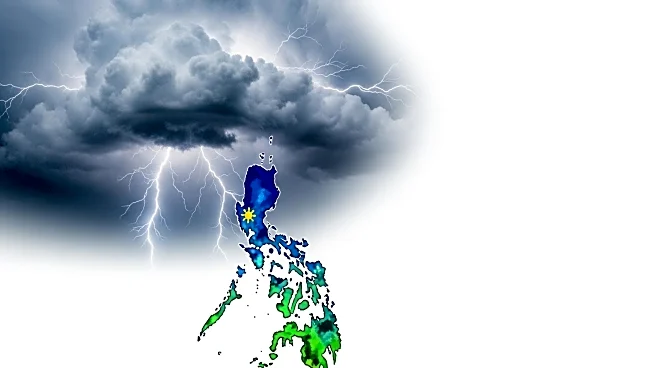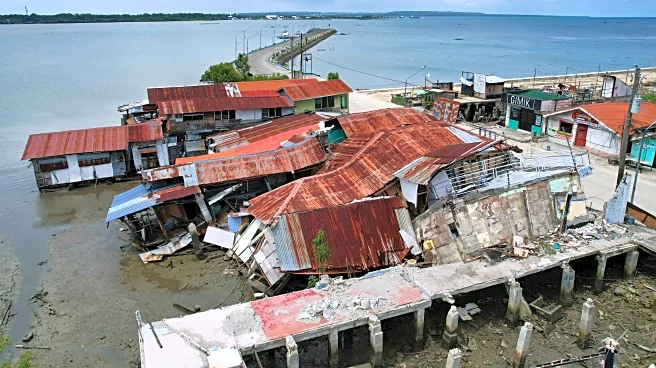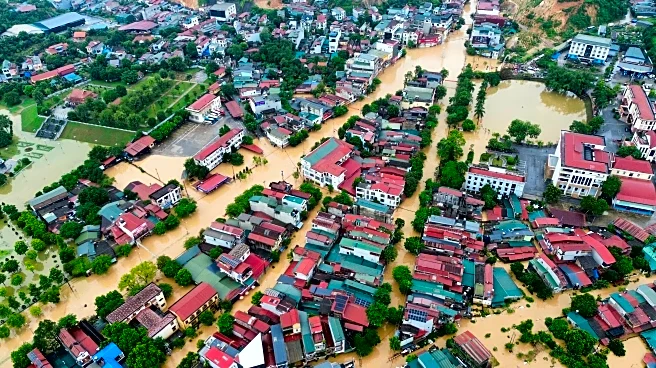What's Happening?
Typhoon Matmo has made landfall in southern China, specifically in Guangdong Province, causing significant disruptions. The storm, with winds equivalent to a Category 2 hurricane, has led to over 151,000 evacuations and raised concerns about potential flooding. Authorities are closely monitoring the situation as the typhoon moves inland, with forecasts predicting heavy rainfall that could exacerbate flooding risks.
Why It's Important?
The impact of Typhoon Matmo underscores the challenges faced by regions prone to tropical cyclones, particularly in terms of emergency response and infrastructure resilience. The mass evacuations highlight the importance of effective disaster management strategies to protect lives and minimize damage. The situation also emphasizes the need for ongoing investment in infrastructure that can withstand severe weather events.
What's Next?
As Typhoon Matmo progresses inland, authorities will continue to assess the damage and coordinate relief efforts. The focus will be on ensuring the safety of evacuated residents and addressing any infrastructure damage. The event may lead to discussions on improving early warning systems and disaster preparedness in affected regions.
Beyond the Headlines
The frequency and intensity of such storms may be linked to broader climate change trends, prompting discussions on global environmental policies and the need for international cooperation in addressing climate-related challenges. The situation may also influence future urban planning and development strategies in vulnerable areas.












